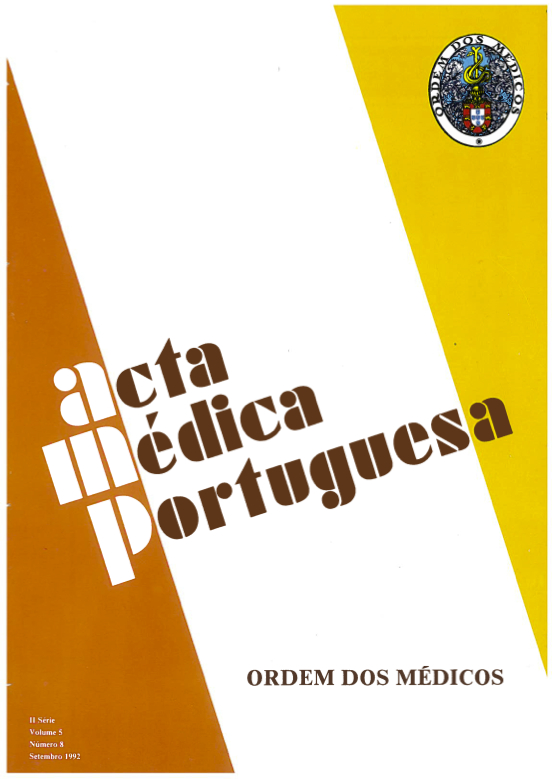Comas na urgência de um hospital central.
DOI:
https://doi.org/10.20344/amp.4147Resumo
The aim of the present prospective work was to study the etiologic diagnosis and prognosis of the comatose patients for whom a neurologic examination is requested. It included 148 consecutive cases admitted to the emergency room of a general hospital. Coma was caused by supratentorial lesions in 38%, subtentorial lesions in 10%, diffuse or metabolic brain dysfunction in 49%, and psychiatric disorder in 1% of the patients. CT scan was the most valuable ancillary exam, modifying the initial etiologic diagnosis in 42% of the cases on whom it was performed. Seventy percent of the patients died. Coma caused by structural lesions had a worse outcome than coma caused by diffuse or metabolic brain dysfunction (intoxications excluded), and this type of coma had a worse outcome than drug-induced coma. The presence of anisocoria, the number of brainstem reflexes present and the pattern of motor response, as well as the Glasgow Coma Scale score, predicted the outcome.Downloads
Downloads
Como Citar
Edição
Secção
Licença
Todos os artigos publicados na AMP são de acesso aberto e cumprem os requisitos das agências de financiamento ou instituições académicas. Relativamente à utilização por terceiros a AMP rege-se pelos termos da licença Creative Commons ‘Atribuição – Uso Não-Comercial – (CC-BY-NC)’.
É da responsabilidade do autor obter permissão para reproduzir figuras, tabelas, etc., de outras publicações. Após a aceitação de um artigo, os autores serão convidados a preencher uma “Declaração de Responsabilidade Autoral e Partilha de Direitos de Autor “(http://www.actamedicaportuguesa.com/info/AMP-NormasPublicacao.pdf) e a “Declaração de Potenciais Conflitos de Interesse” (http://www.icmje.org/conflicts-of-interest) do ICMJE. Será enviado um e-mail ao autor correspondente, confirmando a receção do manuscrito.
Após a publicação, os autores ficam autorizados a disponibilizar os seus artigos em repositórios das suas instituições de origem, desde que mencionem sempre onde foram publicados e de acordo com a licença Creative Commons









